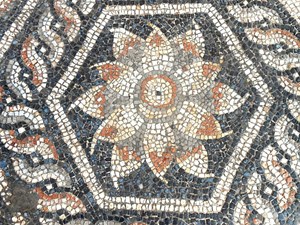
The ancient urban complex of Kom el-Dikka has been excavated by Poland’s Centre for Mediterranean Archaeology (CAS since 1960. Polish archaeologists work in cooperation with the Egyptian Ministry of Antiquities. Kom el-Dikka is a neighborhood in Alexandria, Egypt. Now an important archaeological site, Kom Al Dikka was a well-off residential area in Graeco-Roman times, with impressive villas, bathhouses and a theatre.
Image: A new mosaic was found by a team of Polish archaeologists in Kom el-Dikka site in Alexandria. Image credit: Poland’s Centre for Mediterranean Archaeology (CAŚ)
The ancient urban complex of Kom el-Dikka has been excavated by Poland’s Centre for Mediterranean Archaeology (CAS since 1960. Polish archaeologists work in cooperation with the Egyptian Ministry of Antiquities.
Kom el-Dikka is a neighborhood in Alexandria, Egypt. Now an important archaeological site, Kom Al Dikka was a well-off residential area in Graeco-Roman times, with impressive villas, bathhouses and a theatre.
The site still have many artifacts that can be unearthed. Digging has uncovered successively a vast fragment of the Late Antique city (4th–7th centuries AD) including a small theatre, the grand Imperial bath and a unique group of twenty-two lecture halls – apparently the remains of an ancient “university”.
In recent years, excavation work concentrated on the study of the still mostly unknown residential architecture of Roman Alexandria (1st–3rd centuries AD).

ArtDependence Magazine is an international magazine covering all spheres of contemporary art, as well as modern and classical art.
ArtDependence features the latest art news, highlighting interviews with today’s most influential artists, galleries, curators, collectors, fair directors and individuals at the axis of the arts.
The magazine also covers series of articles and reviews on critical art events, new publications and other foremost happenings in the art world.
If you would like to submit events or editorial content to ArtDependence Magazine, please feel free to reach the magazine via the contact page.